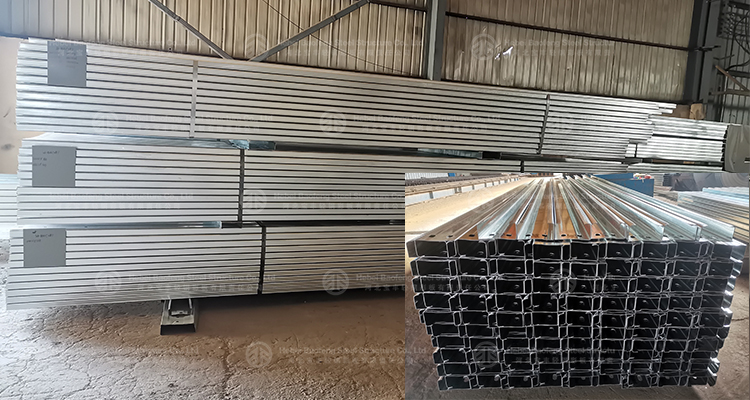
What are Purlins?
Found in most large structures, purlins are the horizontal beams that provide structural support to a building by helping to pass roof loads to other major structural elements. In other words, they support the weight of the metal sheeting, plyboard, wooden panels, and other materials that comprise the surface of a roof, and anything else that might be built up on top of a roof (e.g., snow, water, building accessories, etc.).
While it can vary from structure to structure, purlins typically help spread the load of a roof to other structural elements like building walls, rafters, or metal support beams. This helps to diffuse the weight of a building’s roof across the entire surface and to multiple components of the building, rather than having the majority of the roof’s load be concentrated on just the walls, just the rafters, etc. Purlins are essentially necessary components for a quality building; regardless of whether your structure is made from wood, steel, or some other material, purlins are a critical part of any structure’s roof. How many purlins a roof has, and the thickness or depth varies depending on the loadings for that building.
Purlins take on a number of forms and are typically classified according to their shape, the material they are made of, and their intended use.
We’ll discuss the different purlin shapes in a moment, but when it comes to material there’s no question that steel purlins are the preferred choice by the construction industry. Unlike wood, steel purlins will not rot, they are not affected by water and moisture, and their expansion and contraction in different climates is minimal. These are all weaknesses of wooden purlins, and ones which can seriously hinder the structural integrity of the roof and, indeed, of the structure itself.
Steel purlins are typically made from cold-formed steel. As opposed to working with hot metal, cold-formed steel is made by rolling and pressing thin sheets of steel into the desired shape. Cold-formed steel is stronger than hot-formed steel and easier to work with. After the forming of the steel it is then dipped in molten zinc in a process known as galvanizing. Galvanizing coats the steel in zinc which protects the steel from harsh environments and corrosion. Galvanized steel can often be identified by its ‘spangle’, a crystalized pattern on its surface.
Purlins make up the secondary support system in the framing along with their horizontal counter parts, girts. Girts and purlins run in between the primary framing much like cross beams in a wooden structure. The purpose of the secondary structural supports is to distribute loads onto the primary framing and foundation. The secondary framing is also used to attach wall cladding and the roof.

Trước :
Sandwich panel roofKế tiếp :
Multi Storey Steel WarehouseThể loại
Sản phẩm mới